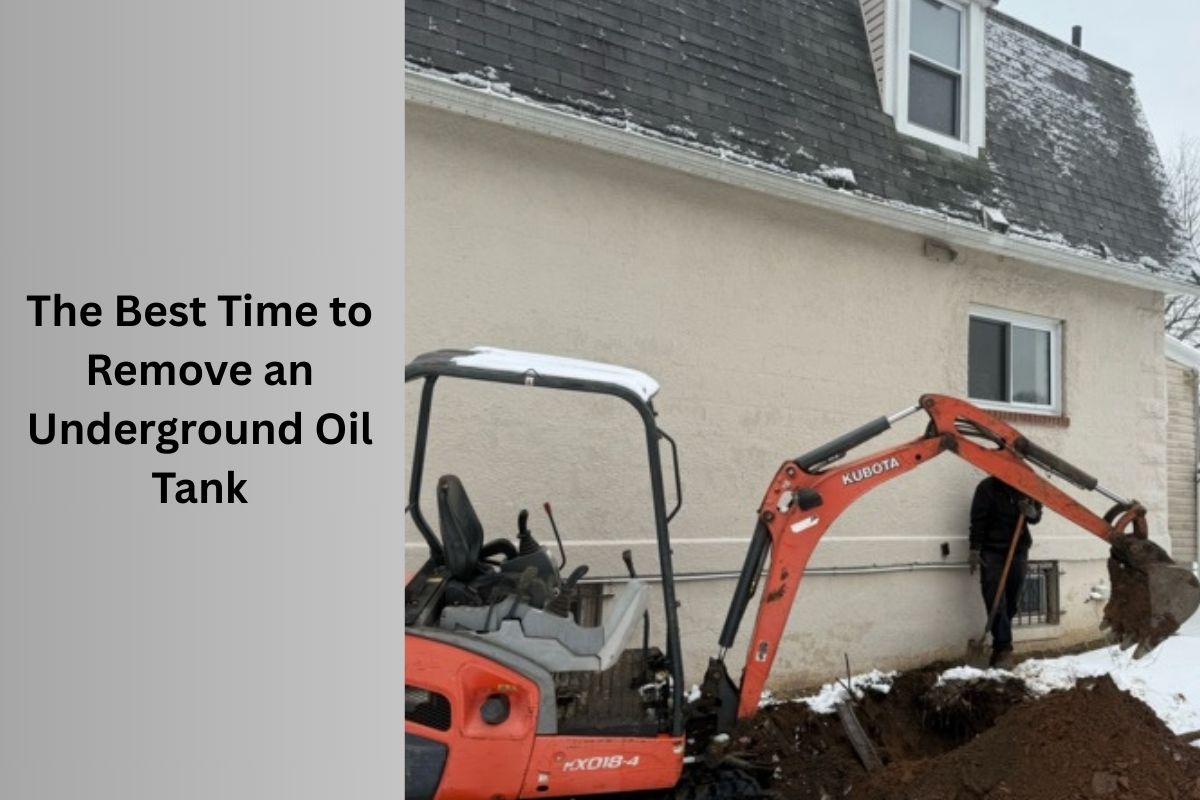Underground oil tanks were once a popular solution for home heating in New Jersey. However, as years pass and tanks age, they can pose serious environmental hazards if left ignored. Property owners who delay or avoid removing old or abandoned oil tanks not only jeopardize the environment but also risk facing expensive liabilities and legal consequences.
In this blog post, we’ll explore the environmental risks of ignoring oil tank removal in New Jersey and why hiring a qualified oil tank removal company is not just a smart move—but an urgent necessity.
The Hidden Danger Beneath Your Property
Buried oil tanks are often “out of sight, out of mind,” especially when no immediate problems are visible. However, corrosion, wear, and temperature fluctuations cause steel tanks to degrade over time. This creates small holes and cracks that lead to gradual oil leaks. Many homeowners don’t even realize there’s a leak until contamination is detected in soil, groundwater, or nearby wells.
Unfortunately, New Jersey’s dense population and older housing stock make the risk even greater. Thousands of properties across the state still have underground oil tanks that may already be leaking hazardous substances.
Groundwater Contamination
New Jersey depends heavily on groundwater as a source of drinking water. When an underground tank leaks oil, the contamination doesn’t stay confined to your yard—it can seep into nearby groundwater sources and spread. Even a small leak can cause significant environmental damage over time, affecting not only your property but your neighbors and local ecosystems.
Leaked oil can contaminate aquifers, leading to dangerous levels of benzene and other volatile organic compounds (VOCs) in the water supply. These pollutants are toxic and can pose serious health risks, including liver and kidney damage, immune system disruption, and increased cancer risk with long-term exposure.
Soil Pollution and the Need for Remediation
One of the most immediate impacts of an oil leak is soil contamination. The chemicals in heating oil can change the composition of the soil, killing plant life and making the land unsafe for use. Once contaminated, soil becomes unsuitable for gardening, landscaping, and even construction.
This is where a soil remediation service becomes critical. Remediation involves removing or neutralizing pollutants from the soil, restoring the land to a safe and usable condition. However, the longer the contamination is ignored, the more extensive—and expensive—the cleanup becomes. In some cases, property owners are required by state regulations to conduct soil remediation before selling or developing the land.
Harm to Local Ecosystems
Leaking oil tanks also impact wildlife and plant ecosystems, especially in suburban and rural areas of New Jersey. Oil that reaches nearby wetlands, streams, or forests can harm fish, birds, and other native species. It may also disrupt food chains and alter soil conditions that support local plant life.
Environmental risks aren’t just confined to your property—they ripple outward, potentially harming protected areas or violating state and federal environmental regulations. The financial penalties and legal challenges that can follow are often devastating for homeowners or real estate investors.
Legal and Financial Repercussions
Ignoring an old oil tank doesn’t just pose environmental risks—it can also lead to serious financial trouble. If contamination is discovered later, homeowners are legally responsible for the cleanup. This can cost tens of thousands of dollars, especially if groundwater has been affected or if multiple properties are involved.
Furthermore, many banks and insurance companies in New Jersey now require proof that any oil tanks have been removed or decommissioned before approving a mortgage or property sale. Ignoring tank removal can make it harder to sell your home, reduce your property value, or result in your insurance claim being denied in the event of a leak.
The Role of a Professional Oil Tank Removal Company
To avoid these risks, working with a licensed and experienced oil tank removal company is essential. These professionals can identify, locate, and safely remove underground tanks using state-approved procedures. They also handle all necessary permits, testing, and documentation to ensure compliance with New Jersey Department of Environmental Protection (NJDEP) regulations.
A reputable oil tank removal company can also perform post-removal testing to confirm whether any contamination occurred and recommend a soil remediation service if needed. Acting proactively not only safeguards the environment but also protects your financial future and legal standing.
Final Thoughts
Oil tank removal is not something homeowners in New Jersey can afford to overlook. Ignoring an old or leaking oil tank may seem like a cost-saving decision in the short term, but it can result in long-lasting environmental damage and costly legal liabilities. Contaminated soil, poisoned groundwater, and damaged ecosystems are just the beginning.
Hiring a certified oil tank removal company and, when necessary, a soil remediation service is the most responsible and effective way to eliminate these risks. Protect your property, your community, and the environment by taking action today.










